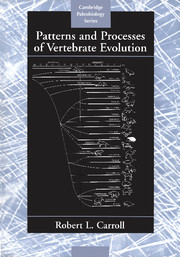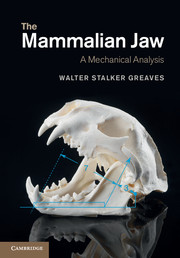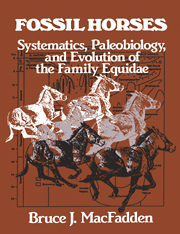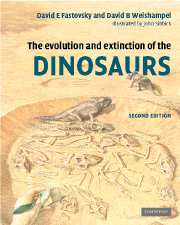Patterns and Processes of Vertebrate Evolution
This new text provides an integrated view of the forces that influence the patterns and rates of vertebrate evolution from the level of living populations and species to those that resulted in the origin of the major vertebrate groups. The evolutionary roles of behavior, development, continental drift, and mass extinctions are compared with the importance of variation and natural selection that were emphasized by Darwin. It is extensively illustrated, showing major transitions between fish and amphibians, dinosaurs and birds, and land mammals to whales. No book since Simpson's Major Features of Evolution has attempted such a broad study of the patterns and forces of evolutionary change. Undergraduate students taking a general or advanced course on evolution, and graduate students and professionals in evolutionary biology and paleontology will find the book of great interest.
- A new advanced undergraduate text discussing the major evolutionary mechanisms and patterns in vertebrate evolution by an acclaimed text book author
- Extensively illustrated, many unique to this book
- Provides an integrated view of evolution, combining information from the study of both modern populations and fossil lineages, developmental biology, plate tectonics, and phylogenetic systematics
Reviews & endorsements
"It is in my view the most important book in vertebrate evolution since Simpson's Tempo and Mode in Evolution (1944), because of what it offers as a summary, an integration, and above all a prospectus for vertebrate biologists of a new synthesis that is showing all signs of a very healthy infancy. Our next generation of scientists would do well to train themselves as Carroll has done in order to fulfill his vision of what integrative vertbrate biology can become." Science
"Every now and again, a brave paleontologist stands back and looks over the collection for anything that links all the tales together...Robert Carroll has broken new ground. He views the fossil record with the eyes of a biologist and a geologist...Not since 1953, when George Gaylord Simpson published Major Features of Evolution has there been such a well-founded overview of vertebrate fossils, their distribution in time and space, relationships with other organisms and with the environment..." New Scientist
"Bob Carroll's latest book provides the first modern review of large scale patterns in the evolution of vertebrates viewed in the context of current evolutionary theory. A veritable tour de force...Carroll's book is well written and effectively illustrated...Patterns and Processes of Vertebrate Evolution will form an essential resource for all students of the evolution of vertebrates, but it can also be read with profit by anyone concerned with general issues of contemporary evolutionary biology." American Paleontologist
"Patterns and Processes of Vertebrate Evolution is a masterful overview of evolution as it is understood by many vertebrate paleontologists and others today...Carroll writes clearly and rapidly-the whole is remarkably up to date, with meaningful incorporation of much current literature...this is a fine book." The Society for the Study of Evolution
"...excellent review of the vast recent literature on development, particularly rewarding reading." American Paleontologist
"Carroll's overview is welcome, well organized...and will prove to be a very useful backdrop to undergraduate courses on general evolution, or vertabrate history." Geological Magazine
"The book covers a broad compass and the author provides accounts of the immense range of biological and geological topics. It is a useful addition to the literature on fossils and evolution." Historical Biology
Product details
April 1997Paperback
9780521478090
464 pages
254 × 178 × 23 mm
0.985kg
173 b/w illus. 14 tables
Available
Table of Contents
- Preface
- Acknowledgments
- Part I. Current Problems in Evolutionary Theory: Part II. Theories of Evolution at the Level of Populations and Species: Part III. Evolution in Modern Populations: Part IV. Limits to Knowledge of the Fossil Record and Their Influence on Studies of Evolution: Part V. Patterns of Evolution Among Late Cenozoic Mammals: Part VI. Patterns of Evolution of Non-Mammalian Vertebrates in the Late Cenozoic: Part VII. The Influence of Systems of Classification on Concepts of Evolutionary Patterns: Part VIII. Evolutionary Constraints: Part IX. Evolutionary Genetics: Part X. Development and Evolution: Part XI. Physical Constraints: Part XII. Major Evolutionary Transitions: Part XIII. Patterns of Radiation: Part XIV. Forces of Evolution: Part XV. Conclusions and Comparisons: Glossary. References. Index.







